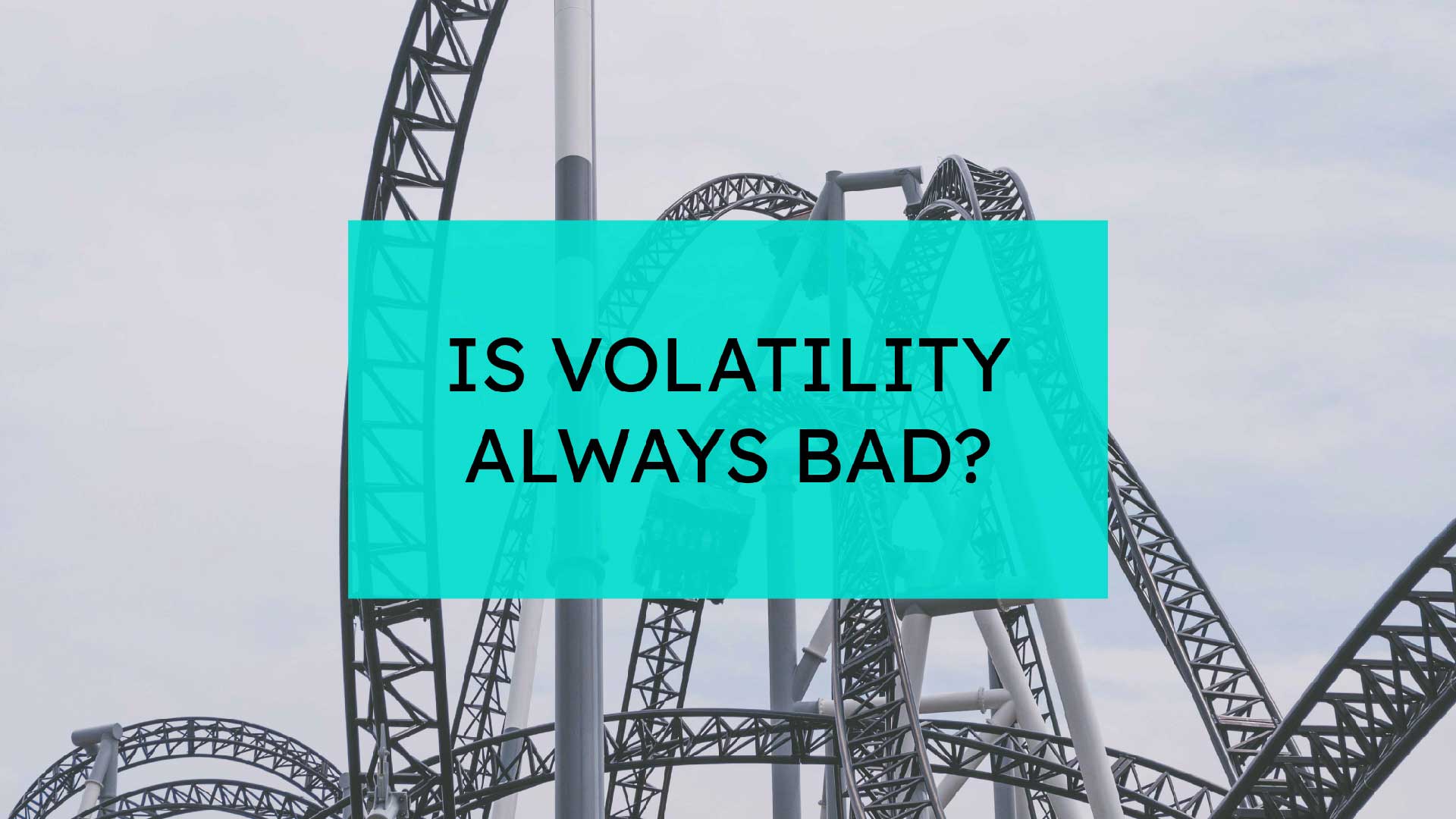
Volatility is almost always purported in the financial media to be a negative characteristic of financial markets. While this topic is covered ad nauseam across the headlines, two key characteristics are often left out: how volatility is specifically measured and what (if any) historical impact it has had across timeframes. This blog post serves as a primer to provide a degree of context around the headlines.
Before we dive into measuring and observing historical regimes, we must first define volatility and have a framework for interpreting the results. Merriam-Webster provides the simplest definition of volatility as “a tendency to change quickly and unpredictably.”
In financial markets, this definition can be implied to mean a wider than usual dispersion of expected outcomes. As such, we would expect market volatility (no matter how it’s measured) to have little to no signal for financial markets because it should, by definition, be unpredictable.
However, financial markets tend to operate with their own set of rules. We find not only has volatility historically been cyclical throughout time, but it tends to be inversely correlated with price.
The CBOE S&P 500 Volatility Index (VIX) is the most widely cited metric of volatility in the market. While many metrics are backward-looking, meaning they describe “realized” volatility, the VIX represents forward-looking or “implied” volatility for the S&P 500. Said more simply, it is the market’s expectation of potential movements over the next month.
There tends to be a persistently negative quarterly correlation between these two indices, and the inverse relationship becomes even more clear when viewing these two over longer timeframes. Historically, when the S&P 500 falls, the VIX tends to rise.
Therefore, the VIX has been crowned the “fear gauge” by many investors and journalists.
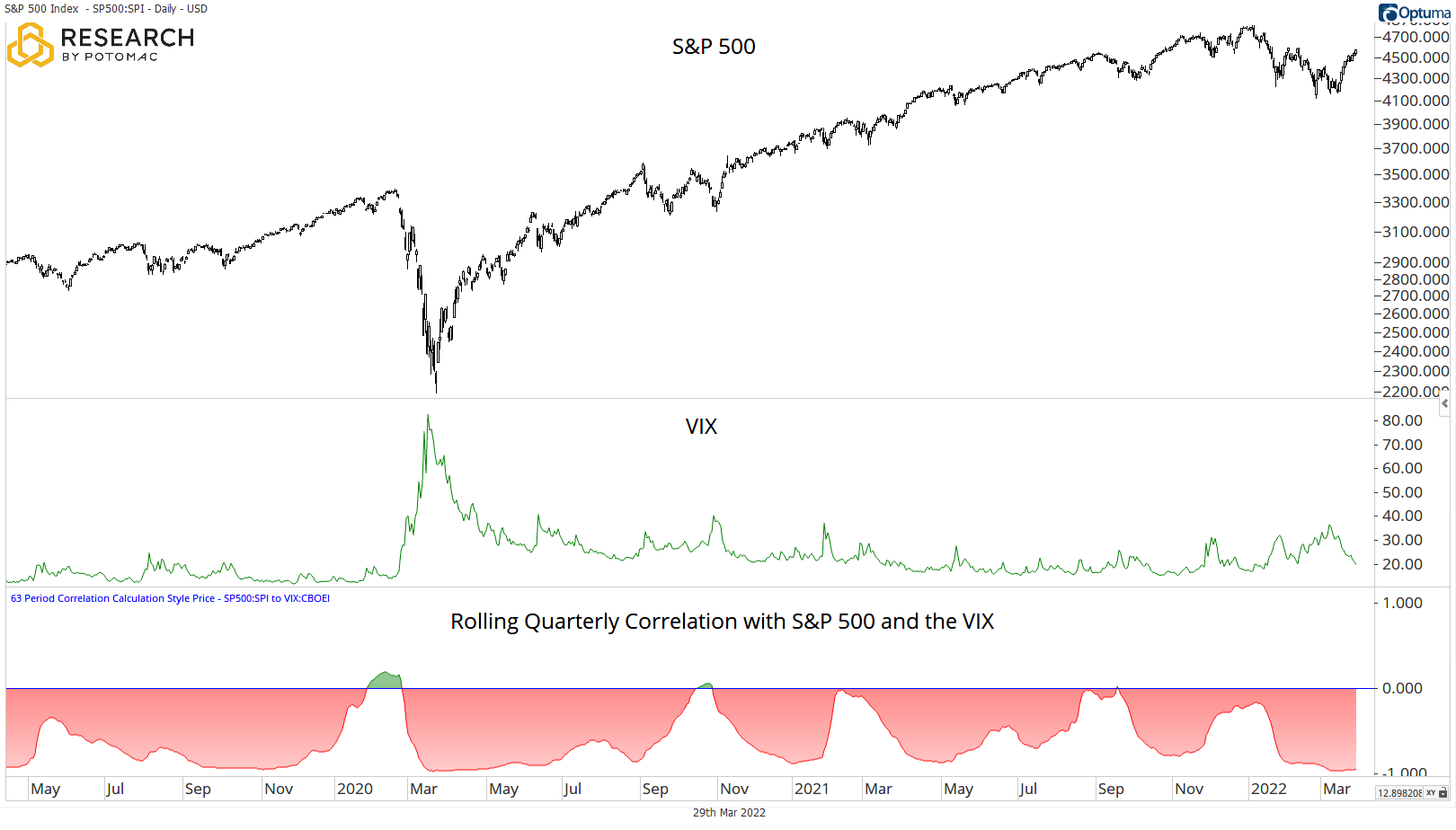
*As of the close of trading 3/28/22
A method for visualizing historical (realized) volatility is Bollinger Bandwidth. Bollinger Bandwidth, coined by John Bollinger, plots the width in percentage terms of two-standard deviations of monthly price movements. When the indicator is rising, monthly volatility is expanding, and vice versa.
In the chart below, we have the S&P 500 (top pane) Monthly Volatility (Bollinger Bandwidth, Middle Pane) and the rolling quarterly correlation of these two in the bottom pane.
What should immediately jump out is that while there have been periods of time when volatility was positively correlated (green shaded areas), this relationship spends most of its time being inversely correlated.
Note the similar relationship here that has played out in the chart of the VIX and the S&P 500 in the prior section. While forward-looking volatility via the VIX tends to have a much more stable inverse relationship with the stocks, historical volatility appears to exhibit these same characteristics, albeit to a lesser degree.
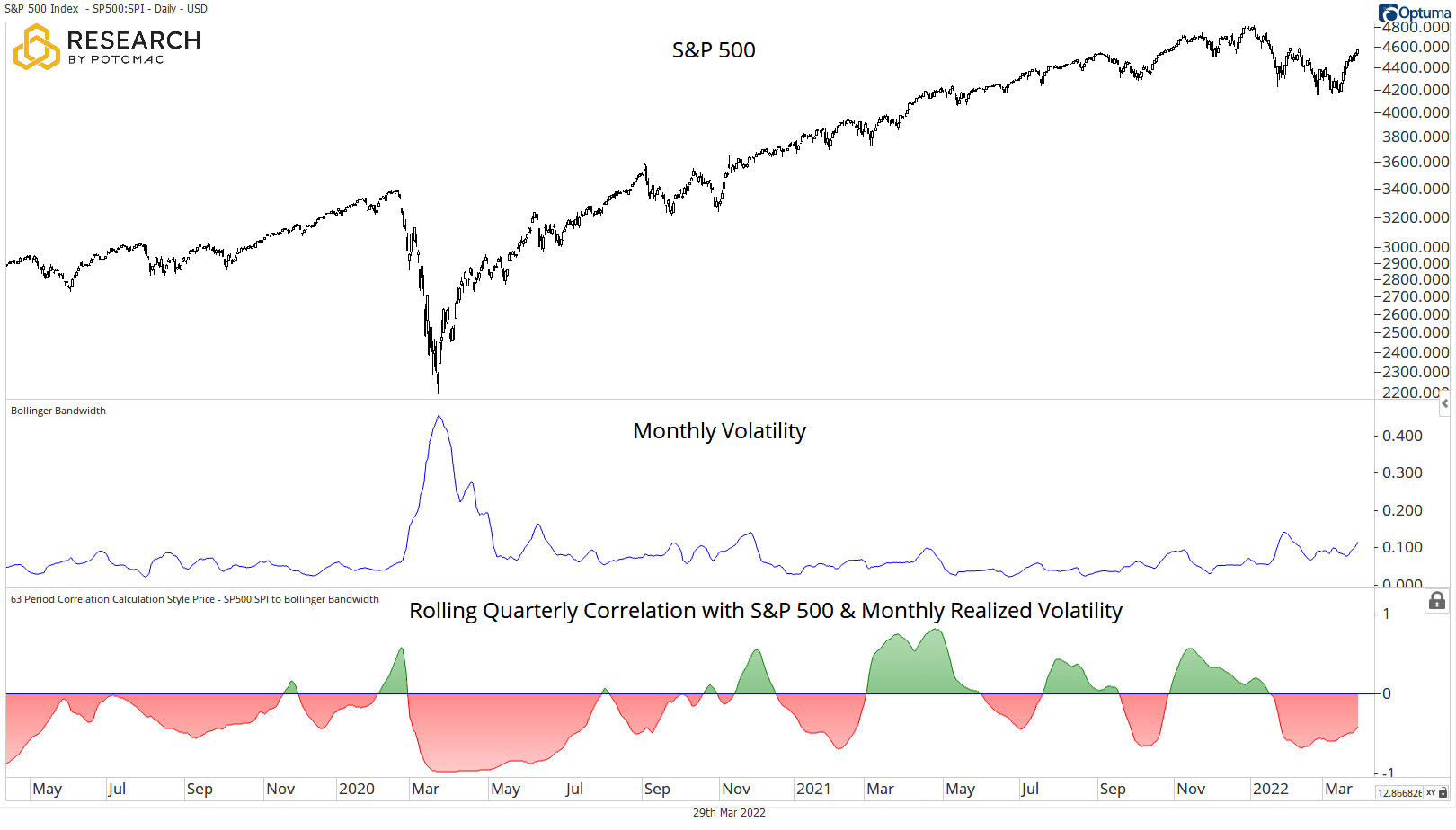
*As of the close of trading 3/28/22
Since history suggests that volatility (broadly speaking) tends to move in the opposite direction of stock prices, how can we identify extremes in this metric? What happens when these extremes are breached?
One way is to look at the number of days rolling one-month periods when there have been moves (close to close) of greater than 1%.
In the chart below, we review the results for the S&P 500 when the number of +/- 1% daily moves in the index is in the majority (> 11 days in a rolling one-month period).
The green-shaded areas on the three-year chart represented when most days in the trailing month had a +/- 1% move.
Except for December of last year, what has been noteworthy over this timeframe is that this “overblown” condition of volatility has tended to occur after periods of heightened stress in the equity markets.
There were 920 instances since 1950 when majority of trading days in the trailing month had a +/- 1% move. The median gain for the S&P 500 has been 5.72%, and the index has been higher 72.02% of the time over the following quarter of trading. This compares to baseline three-month statistics of a 2.62% median return and a 66.47% hit rate for the S&P 500 since the beginning of 1950.
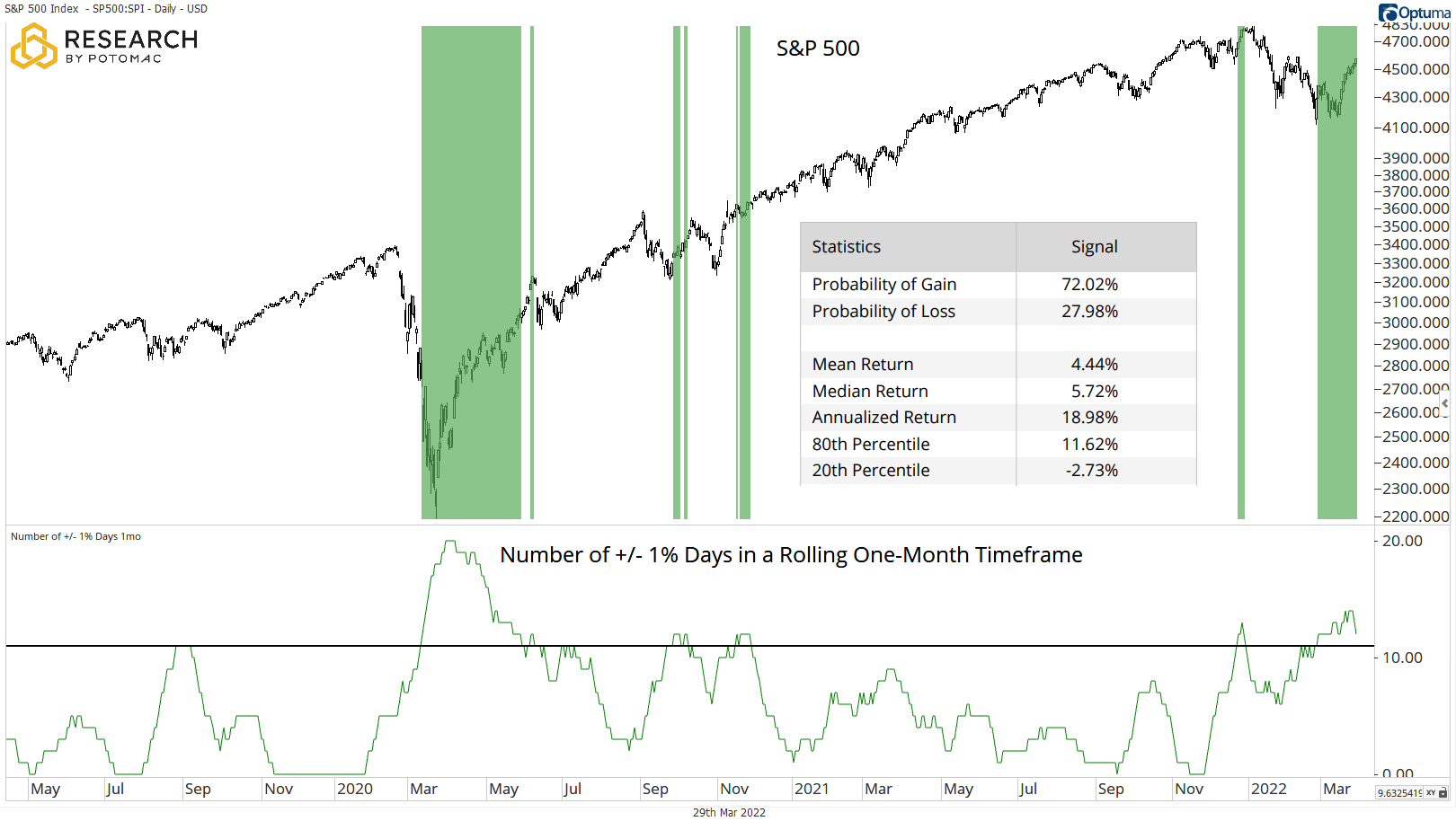
*As of the close of trading 3/28/22
While these results appear attractive, if we zoom out, the enthusiasm should be tempered to a degree. While it’s generally true that this volatility condition has been indicative of a “washed out” environment within equities, being washed out is not a prerequisite for this volatility environment to materialize.
In fact, like many indicators, this condition is present at times before, during, and after major periods of market stress. In the chart below, you’ll notice several highlighted sections during the drawdown in the 1970s, before and during the dot-com bubble, and before and during the Great Financial Crisis.
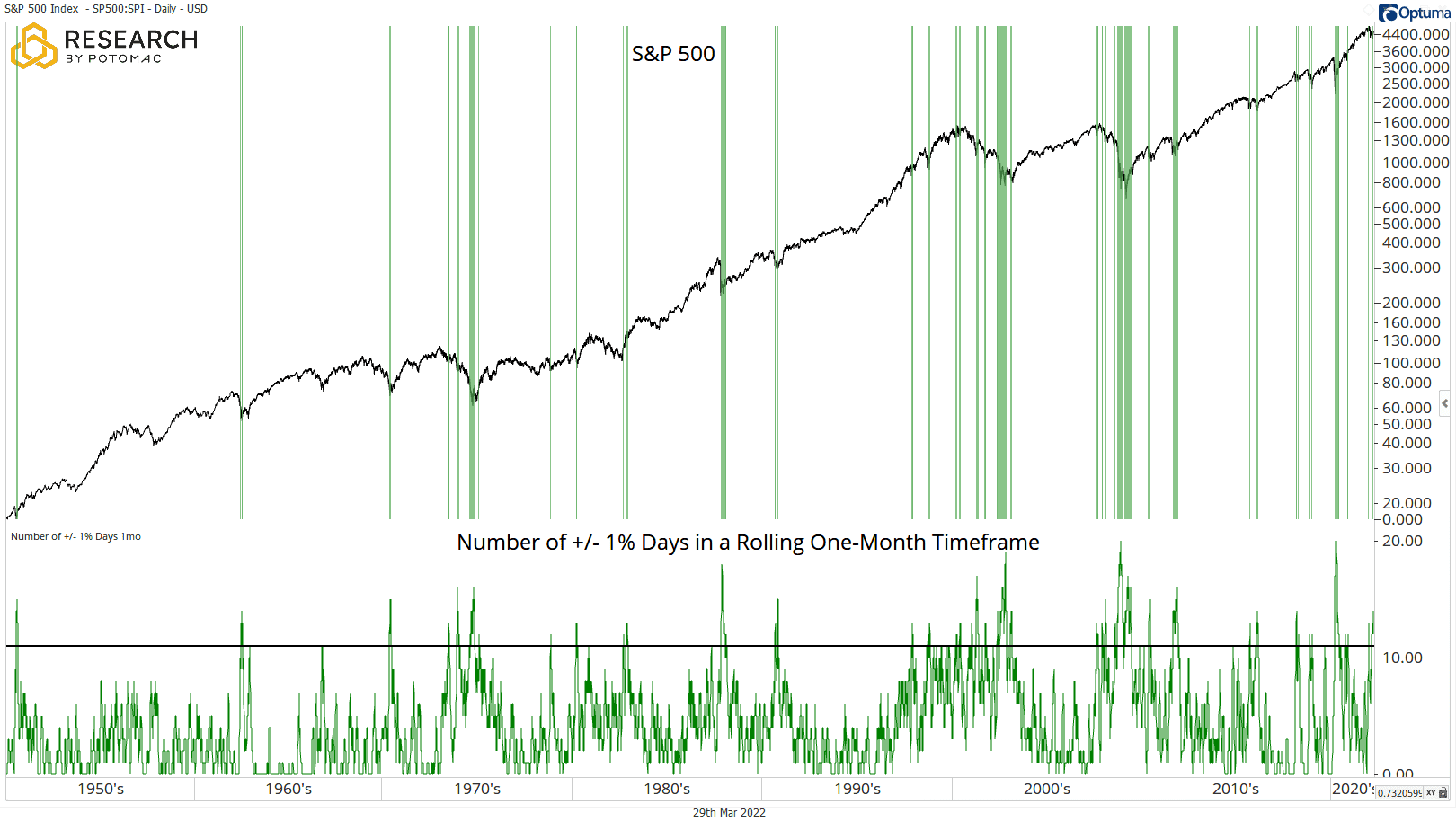
*As of the close of trading 3/28/22
Bringing It All Together
Can we conclusively say that “volatility is bad” for the stock market? Of course not.
However, while there is merit to overblown volatility conditions as a potential contrarian opportunity, no signal or market condition works in isolation. This is a theme that is recurring through most if not all of the work that we do.
As you can see from the long-term chart above, there are times when this condition does the exact opposite of what you want it to do – which is to give an indication of when the market’s downside cascade has run out of steam. In some cases, this condition has occurred close to or shortly after the market tops.
While the results over the long term may be generally attractive, the most important aspect of incorporating anything into a system or portfolio is the art and science of risks management. No matter how good the indicator or condition might be, it will sometimes be wrong – but that’s where the risk management process kicks in.
*A deeper look at the impact of rising volatility was highlighted in Research by Potomac’s March MythBusters note.
Disclosure: This information is prepared for general information only and should not be considered as individual investment advice nor as a solicitation to buy or offer to sell any securities. This material does not constitute any representation as to the suitability or appropriateness of any investment advisory program or security. Please visit our FULL DISCLOSURE page.
